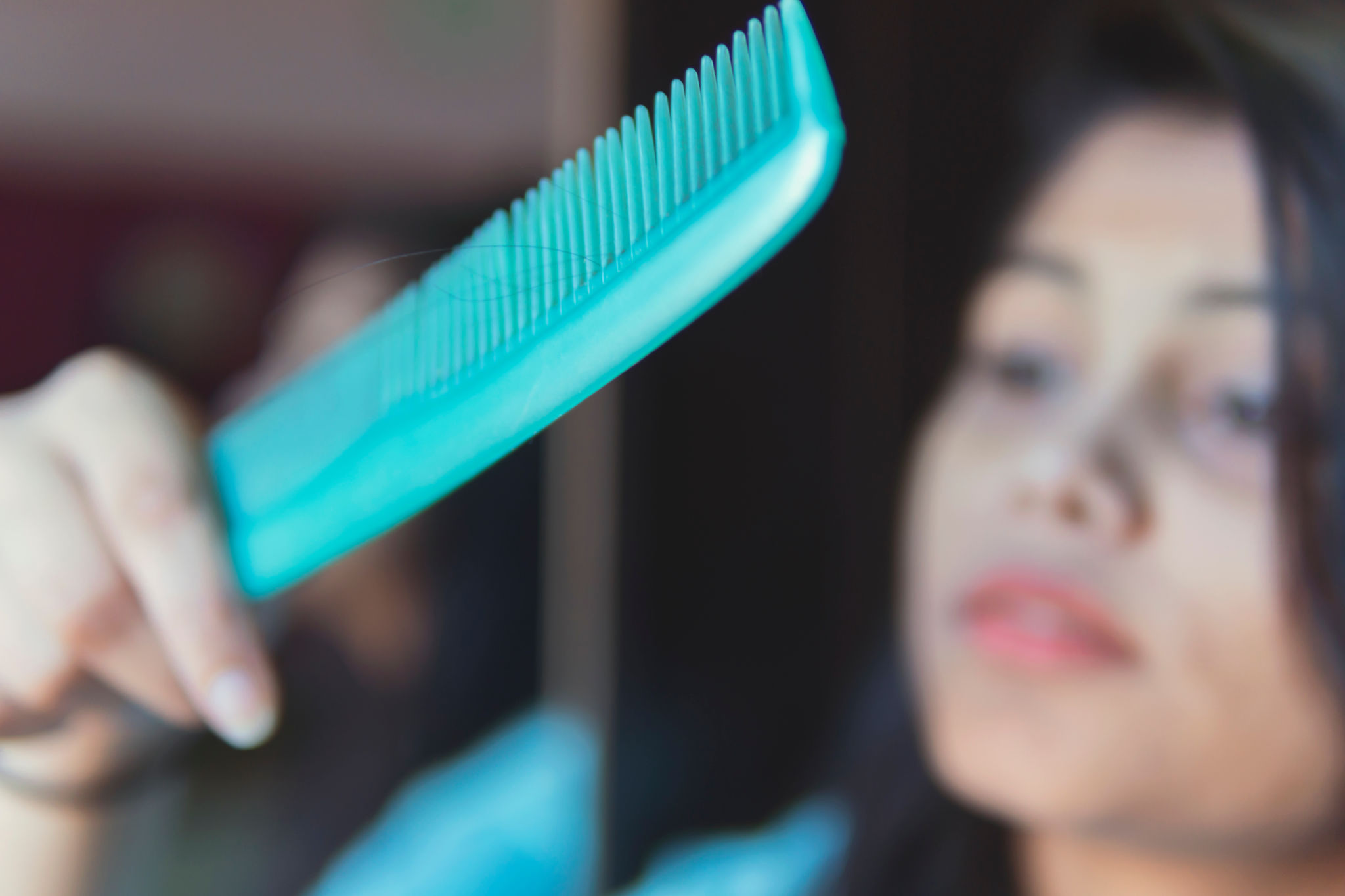What is Hair loss
Hair loss is the thinning of hair on the scalp. Everyone loses some hair every day. Losing up to 100 hairs a day is normal. But if hair loss runs in your family, you could lose a lot more hair. With this kind of hair loss, you may end up with bald spots. About half of all people have this type of hair loss by around age 50.
Most people normally shed 50 to 100 hairs a day. This usually doesn’t cause noticeable thinning of scalp hair because new hair is growing in at the same time. Hair loss occurs when this cycle of hair growth and shedding is disrupted or when the hair follicle is destroyed and replaced with scar tissue.

What are the Causes for Hair loss
The exact cause of hair loss may not be fully understood, but it’s usually related to one or more of the following factors:
- Family history (heredity). The most common cause of hair loss is a hereditary condition called male-pattern baldness or female-pattern baldness. It usually occurs gradually and in predictable patterns — a receding hairline and bald spots in men and thinning hair in women.
- Hormonal changes. Hormonal changes and imbalances can cause temporary hair loss. This could be due to pregnancy, childbirth or the onset of menopause. Hormone levels are also affected by the thyroid gland, so thyroid problems may cause hair loss.
- Patchy hair loss. This type of nonscarring hair loss is called alopecia areata (al-o-PEE-she-uh ar-e-A-tuh). It occurs when the body’s immune system attacks hair follicles — causing sudden hair loss that leaves smooth, roundish bald patches on the skin.
- Scalp infections. Infections, such as ringworm, can invade the hair and skin of your scalp, leading to scaly patches and hair loss. Once infections are treated, hair generally grows back.
- Other skin disorders. Diseases that cause scarring alopecia may result in permanent loss at the scarred areas. These conditions include lichen planus, some types of lupus and sarcoidosis.
- Hair-pulling disorder. This condition, also called trichotillomania (trik-o-til-o-MAY-nee-uh), causes people to have an irresistible urge to pull out their hair, whether it’s from the scalp, the eyebrows or other areas of the body.
- Medications. Hair loss can be caused by drugs used for cancer, arthritis, depression, heart problems, high blood pressure and birth control. Intake of too much vitamin A may cause hair loss as well.
- Radiation therapy to the head. The hair may not grow back the same as it was before.
- A trigger event. Many people experience a general thinning of hair several months after a physical or emotional shock. This type of hair loss is temporary. Examples of trigger events include sudden or excessive weight loss, a high fever, surgery, or a death in the family.
- Certain hairstyles and treatments. Excessive hairstyling or hairstyles that pull your hair tight, such as pigtails or cornrows, can cause traction alopecia. Hot oil hair treatments and permanents can cause inflammation of hair follicles that leads to hair loss. If scarring occurs, hair loss could be permanent.
Treatment
- Follow Prescribed Drugs
- Low Level Laser Therapy (LLLT)
- Meso-therapy
- PRP( Platelet-rich plasma)
- Nutritional Therapy


